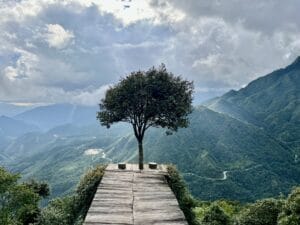Northwest Vietnam motorbike tour to Mai Chau, Ta Xua, Ngoc Chien, Sapa, & Thac Ba | Woods Family
The four great mountain passes Pha Din, O Quy Ho, Ma Pi Leng, and Khau Pha, are all located in northern Vietnam and are renowned for their scenic beauty and challenging terrain. Here’s some information about each of these passes:
Pha Din Pass
Located in the northern mountainous province of Dien Bien, Pha Din Pass is known for its breathtaking views and historical significance. It stretches through the rugged landscape, connecting the provinces of Son La and Dien Bien Phu. The name “Pha Din” translates to “Heaven and Earth,” reflecting the awe-inspiring nature of this pass.
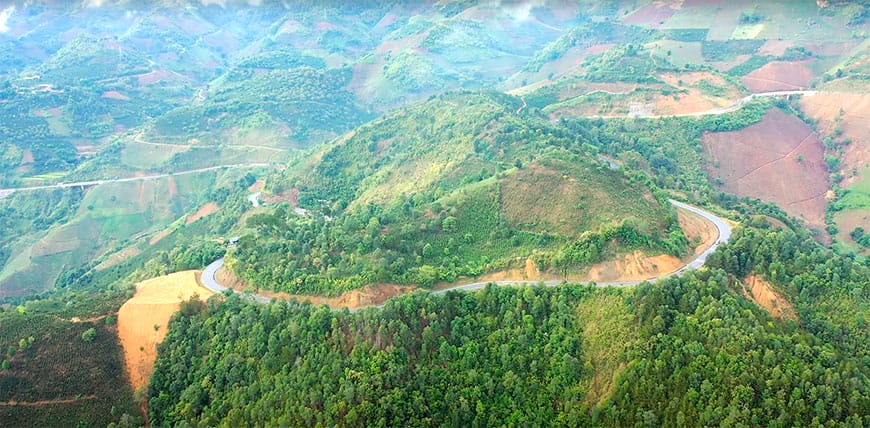
With an altitude from 1.200m to 1.500m above sea level and the length of over 30 km, Khau Phau pass is the longest and most dangerous pass on Highway 32.The pass is covered with fog all year round and its peak rises on the sea of clouds. Khau Pha is the most beautiful in September and October, when the terraces field is at rice harvest time.
O Quy Ho Pass
Situated in the Hoang Lien Son Mountain Range in Lao Cai Province, O Quy Ho Pass is one of the highest mountain passes in Vietnam. It offers stunning vistas of the surrounding mountains, valleys, and terraced fields. The pass connects the popular tourist destinations of Sapa and Lai Chau and is a favorite among adventure seekers and nature enthusiasts.
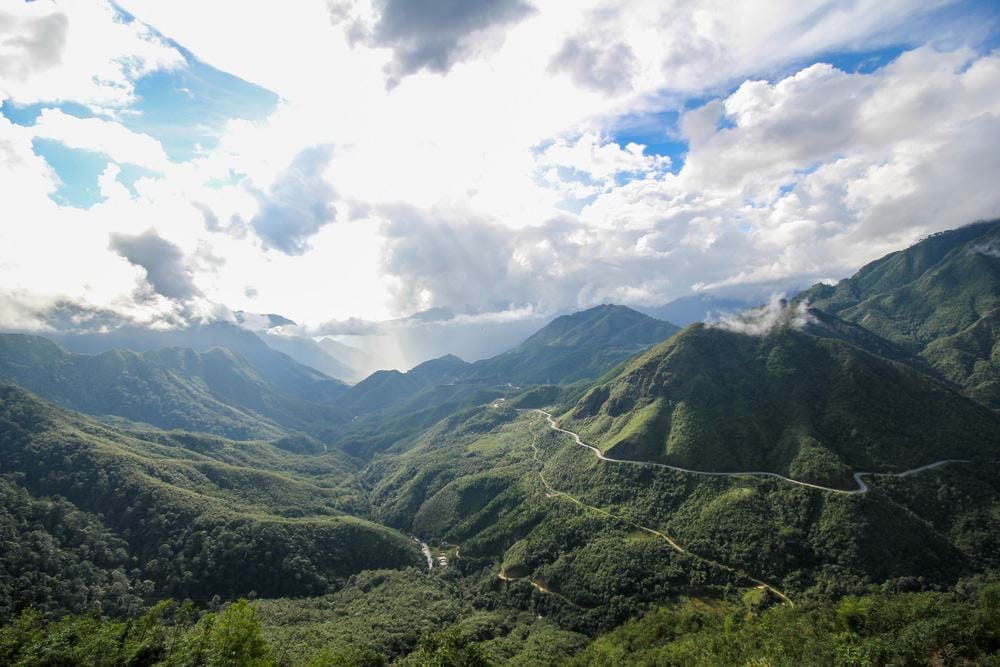
With an average slope of 8-19%, the pass is winding with 8 curves that are extremely dangerous, the radius of the curves is less than 15m, moreover, there are countless curves in the shape of sleeve, letter A, letter Z. In the rainy season, it is very difficult and really dangerous to drive here.
There are often clouds and fog in the middle of Pha Din pass and small villages scattered at the foot of the pass. Standing on the steep slope, visitors can see Muong Quai valley stretching with alot of small villages and low hills. But when you get to the peak, all you can see are blue sky and majestic mountains.
Ma Pi Leng Pass
Located in Ha Giang Province, Ma Pi Leng Pass is often regarded as one of the most spectacular and challenging passes in Vietnam. It cuts through the rocky mountains of the Dong Van Karst Plateau Geopark, offering breathtaking views of deep canyons, limestone cliffs, and the Nho Que River winding through the valley below.
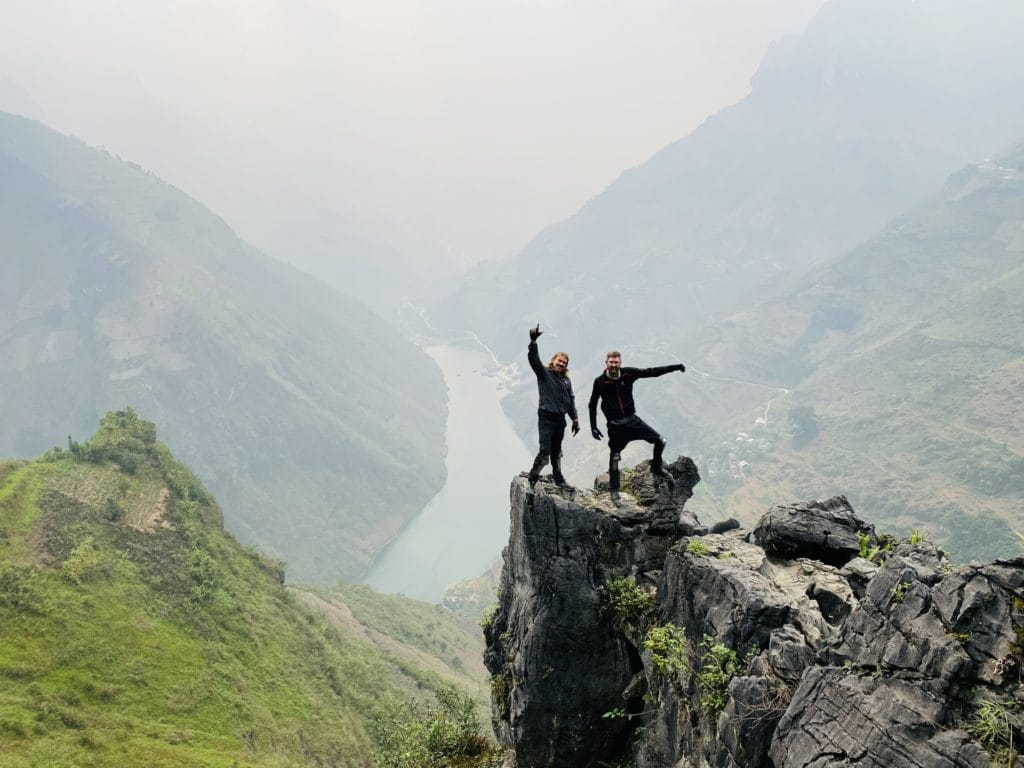
The pass winds through the steep cliffs, at the foot is deep abyss of Nho Que River.To make this road, there were tens of thousands of volunteers from all over the north region working hard day and night, especially the road through Ma Pi Leng was made by suicide youth hanging on the cliff, digging each cm during 11 months.With craggy terrain and majestic scenery, Ma Pi Leng Pass deserves one of the “Four Great Pass” of the North Vietnam.
Khau Pha Pass
Situated in Yen Bai Province, Khau Pha Pass is renowned for its stunning landscapes and winding roads. It offers panoramic views of rice terraces cascading down the mountainsides, creating a picturesque scene. The pass is a popular destination for motorbike enthusiasts and offers a thrilling riding experience.
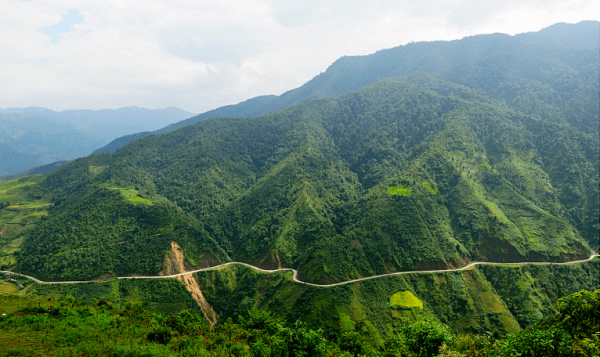
Khau Phạ Pass, which lies between Văn Chấn District and Mù Căng Chải District, is the most rugged and longest pass on National Highway 32 with a length of 30 kilometres (19 mi). Starting from Yên Bái City, visitors need to go upward for about five hours before reaching the pass surrounding by endlessly extending mountains. Along Khau Phạ are terraced rice paddies cultivated by H’Mông and Thái ethnic minorities and pristine forests which are home to some rare species such as Parashorea chinensis.[3] An underground river flows beneath the pass.
Along the length of Khau Phạ Pass are dozens of sharp bends, and the pass is especially dangerous for driving on foggy days as there is no barrier or warning sign. The pass has deteriorated much due to the lack of regular maintenance, and the land is easily eroded since the pass is situated upon weak red basalt soil foundation. Adding to that is the constant danger of falling stones from the mountains
These four mountain passes attract both domestic and international travelers seeking adventure, natural beauty, and cultural exploration in the northern region of Vietnam.



